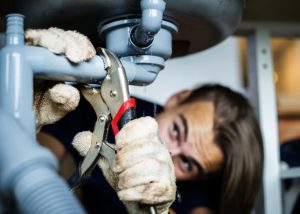6 Ways to Find Concealed Water Leakages in Your House
6 Ways to Find Concealed Water Leakages in Your House
Blog Article
Are you in search of suggestions concerning Locating water leaks?

Early discovery of dripping water lines can reduce a possible catastrophe. Some little water leaks might not be visible.
1. Check Out the Water Meter
Every home has a water meter. Examining it is a proven way that helps you find leakages. For starters, shut off all the water sources. Make sure nobody will flush, use the faucet, shower, run the cleaning maker or dishwashing machine. From there, go to the meter and also watch if it will alter. Since nobody is using it, there should be no activities. If it moves, that suggests a fast-moving leakage. If you detect no adjustments, wait an hour or two and also inspect back once again. This means you may have a sluggish leakage that can even be below ground.
2. Inspect Water Consumption
Examine your water bills and track your water usage. As the one paying it, you must observe if there are any type of disparities. If you detect sudden changes, regardless of your usage coinciding, it means that you have leaks in your plumbing system. Remember, your water costs need to drop under the very same array monthly. An unexpected spike in your costs indicates a fast-moving leakage.
At the same time, a stable rise each month, even with the exact same habits, reveals you have a slow leakage that's likewise slowly escalating. Call a plumber to thoroughly inspect your residential or commercial property, especially if you really feel a cozy location on your floor with piping below.
3. Do a Food Coloring Test
When it comes to water usage, 30% comes from bathrooms. If the shade in some way infiltrates your bowl throughout that time without flushing, there's a leakage in between the storage tank as well as bowl.
4. Asses Outside Lines
Don't fail to remember to examine your outside water lines as well. Should water permeate out of the link, you have a loose rubber gasket. One small leakage can squander loads of water and spike your water expense.
5. Analyze the situation and also examine
Homeowners should make it a habit to examine under the sink counters as well as also inside cupboards for any kind of bad odor or mold development. These two red flags show a leak so punctual interest is required. Doing regular inspections, even bi-annually, can save you from a major problem.
If you recognize your residence is already old, maintain a watchful eye on your heating units, pipes, pipes and so on. Check for stainings and compromising as most appliances and pipelines have a life span. They will certainly likewise naturally deteriorate because of deterioration. Do not wait for it to rise if you believe dripping water lines in your plumbing system. Call a specialist plumber right now so you don't end up with a horrible mess in your house.
Early discovery of dripping water lines can minimize a possible disaster. Some small water leaks might not be noticeable. Inspecting it is a proven means that aids you uncover leaks. One little leakage can squander loads of water and also spike your water bill.
If you suspect dripping water lines in your plumbing system, don't wait for it to rise.
WARNING SIGNS OF WATER LEAKAGE BEHIND THE WALL
PERSISTENT MUSTY ODORS
As water slowly drips from a leaky pipe inside the wall, flooring and sheetrock stay damp and develop an odor similar to wet cardboard. It generates a musty smell that can help you find hidden leaks.
MOLD IN UNUSUAL AREAS
Mold usually grows in wet areas like kitchens, baths and laundry rooms. If you spot the stuff on walls or baseboards in other rooms of the house, it’s a good indicator of undetected water leaks.
STAINS THAT GROW
When mold thrives around a leaky pipe, it sometimes takes hold on the inside surface of the affected wall. A growing stain on otherwise clean sheetrock is often your sign of a hidden plumbing problem.
PEELING OR BUBBLING WALLPAPER / PAINT
This clue is easy to miss in rooms that don’t get much use. When you see wallpaper separating along seams or paint bubbling or flaking off the wall, blame sheetrock that stays wet because of an undetected leak.
BUCKLED CEILINGS AND STAINED FLOORS
If ceilings or floors in bathrooms, kitchens or laundry areas develop structural problems, don’t rule out constant damp inside the walls. Wet sheetrock can affect adjacent framing, flooring and ceilings.
https://www.servicemasterbyzaba.com/blog/how-to-detect-water-leakage-in-walls/

Hopefully you enjoyed our post about Finding hidden leaks. Thank you so much for taking time to browse our blog post. Enjoyed reading our write up? Please share it. Let another person discover it. Thank-you for going through it.
Report this page